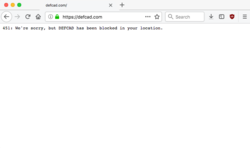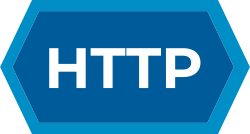
| HTTP |
|---|
 |
| Request methods |
| Header fields |
| Response status codes |
| Security access control methods |
| Security vulnerabilities |
In HTTP, the 451 response status code indicates that a request cannot be satisfied for legal reasons, such as a web page censored by a government. The code value refers to Ray Bradbury's 1953 dystopian novel Fahrenheit 451 , in which books are outlawed. [2] 451 provides more information than HTTP 403, which is often used for the same purpose. [3] This status code is currently a proposed standard in RFC 7725, which updated the IANA HTTP Status Codes Registry to include 451. [4]
Contents
Examples of situations where an 451 could be used include web pages deemed a danger to national security, or web pages deemed to violate copyright, privacy, blasphemy laws, or any other law or court order.
After introduction of the General Data Protection Regulation (GDPR) in the European Economic Area (EEA) it became common practice for websites located outside the EEA to respond with 451 to EEA visitors instead of trying to comply with this new privacy law. For instance, many regional U.S. news sites no longer serve web browsers from the EU. [5] [6] [7]
The RFC is specific that a 451 response does not indicate whether the resource exists but requests for it have been blocked, if the resource has been removed for legal reasons and no longer exists, or even if the resource has never existed, but any discussion of its topic has been legally forbidden (see injunction). [8] Some sites have previously returned HTTP 404 (missing) or similar if they are not legally permitted to disclose that the resource has been removed. It is used in the United Kingdom by some Internet service providers utilising the Internet Watch Foundation blacklist, returning a 404 message or another error message instead of showing a message indicating the site is blocked. [9] [10]
The status code was formally proposed in 2013 by Tim Bray, following earlier informal proposals by Chris Applegate [11] in 2008 and Terence Eden [12] in 2012. It was approved by the Internet Engineering Task Force (IETF) on 18 December 2015. [13] It was published as in the Proposed Standard RFC 7725 in February 2016.
HTTP 451 was mentioned by the BBC's From Our Own Correspondent programme, as an indication of the effects of sanctions on Sudan and the inability to access Airbnb, the App Store, or other Western web services. [14]

